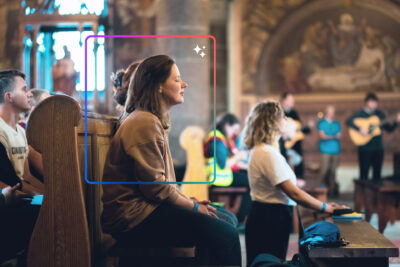
First Impressions: How Technology Can Increase Chances of a Second Visit
First impressions are important. From the moment visitors enter the parking lot, they are debating whether they like your church or not. Some visitors may not even visit your physical location—many will first check out your website. Being intentional with first-time visitors involves some practical steps. 1. Create a strategy People who are new to …
First impressions are important. From the moment visitors enter the parking lot, they are debating whether they like your church or not. Some visitors may not even visit your physical location—many will first check out your website. Being intentional with first-time visitors involves some practical steps.
1. Create a strategy
People who are new to your church have a lot of questions. Some of these question might include: Where do people gather? What is a “worship center”? When do I stand up or sit down? Creating a welcoming environment requires more forethought than coffee stations and friendly greeters.
Jonathan Wolfgang, Pastor of Teaching & Discipleship at Northshore Community Church, says, “People at some level appreciate a level of anonymity. We don’t want to unnecessarily make them feel singled out.”
At Northshore Community Church, the First Impressions team is trained not only to read people’s body language, looking for people who seem lost or have questions, but also use what Wolfgang describes as “accessible language.”
“We try to be conscious of terms like ‘fellowship’ or ‘worship with us’,” says Wolfgang. “Assume that this is their first time at church.”
A top-notch follow-up strategy starts with great tools. To discover how other forward-thinking churches are making strong tech purchases to level up their retention plan, download the free ebook, Church Technology Buyer’s Guide, today.
2. Create clear signage
Have you ever been to a new city and gotten lost? Or maybe even just lost your way in a shopping mall? Many churches meet in schools, convention centers, and hotels. Clear signage is crucial for first time visitors.
Jill Roberts, First Impressions Director at The Pursuit, says that the first interaction they have with visitors is in the parking lot: “It’s important that we clearly identify ourselves and direct people accordingly.”
Roberts says they use lanyards to identify their staff and also use floor rugs with arrows to direct people, since they don’t meet in a traditional church building.
3. Be mindful how you communicate
Talking to strangers is daunting for most people. Asking visitors for their personal information can be mishandled in so many ways. It’s not uncommon for people to ignore a phone number they don’t recognize or delete an email they didn’t subscribe to. So how do you get visitors’ information? Many churches use printed connection cards to ask for visitor’s basic information. This lets you know if someone is visiting for the first time or not.
Thanking visitors for visiting is important. Customized emails allow first-time visitors to have a personal experience.
Wolfgang suggests another way their church is made aware of visitors is through children’s ministry. “If parents provide us with their address, we mail them a gift box with a handwritten note,” Wolfgang says.
Senior Pastor Mark Rogers of Kenmore Community Church adds they also give visitors gifts. “As a small church, we can often easily identify those who are visiting for the first time,” Rogers says. “The gift bag contains information about the church, a small devotional booklet, a pen with the church name on it, and a bag of skittles.”
4. Be intentional with technology
Website
Getting visitors to actually visit your church is a challenge. Getting them to come back a second time requires intentionality. Often, your website is the first thing visitors will check before they come to your building. If your website is confusing or difficult to navigate, the likelihood of that person visiting your church on a Sunday is low. Use clear, simple language and make it easy for them to find your locations and belief statements. All of these things make the experience more personable.
Connection Cards
No one likes filling out paperwork. Make a good impression with visitors by using digital connection cards. Auto Fill from Pushpay allows users to instantly fill out forms on their phones. Visitors can instantly provide you their contact information: this allows you to engage with them beyond Sunday services. Digital connection cards also save you time over managing paper forms.
Push Notifications
Imagine if a guest decides to come back to your church a second time, they’ve downloaded your app, and they’ve already made an investment in your church. But what if it snows and the church is closed for the day? Push notifications allow you to alert people before they get in their car and drive to your location.
According to Content Specialist, Derek Gillette, “Push notifications have a 60-80 percent open rate compared to an average open rate of 20 percent for emails.”
Push notifications allow you to instantly send important announcements to people who have downloaded your app and to personalize messages to targeted audiences. They’re also a great way to get feedback from your community.
Getting visitors to come back to your church is not as mysterious as it might seem. Intentional planning, thoughtful communication, and the use of technology can go a long way.
The right church technology can give you the tools needed to easily plan and create a strong follow-up strategy. To discover how other forward-thinking churches are starting strong with intuitive, easy-to-use technology, download the free ebook, Church Technology Buyer’s Guide, today!






